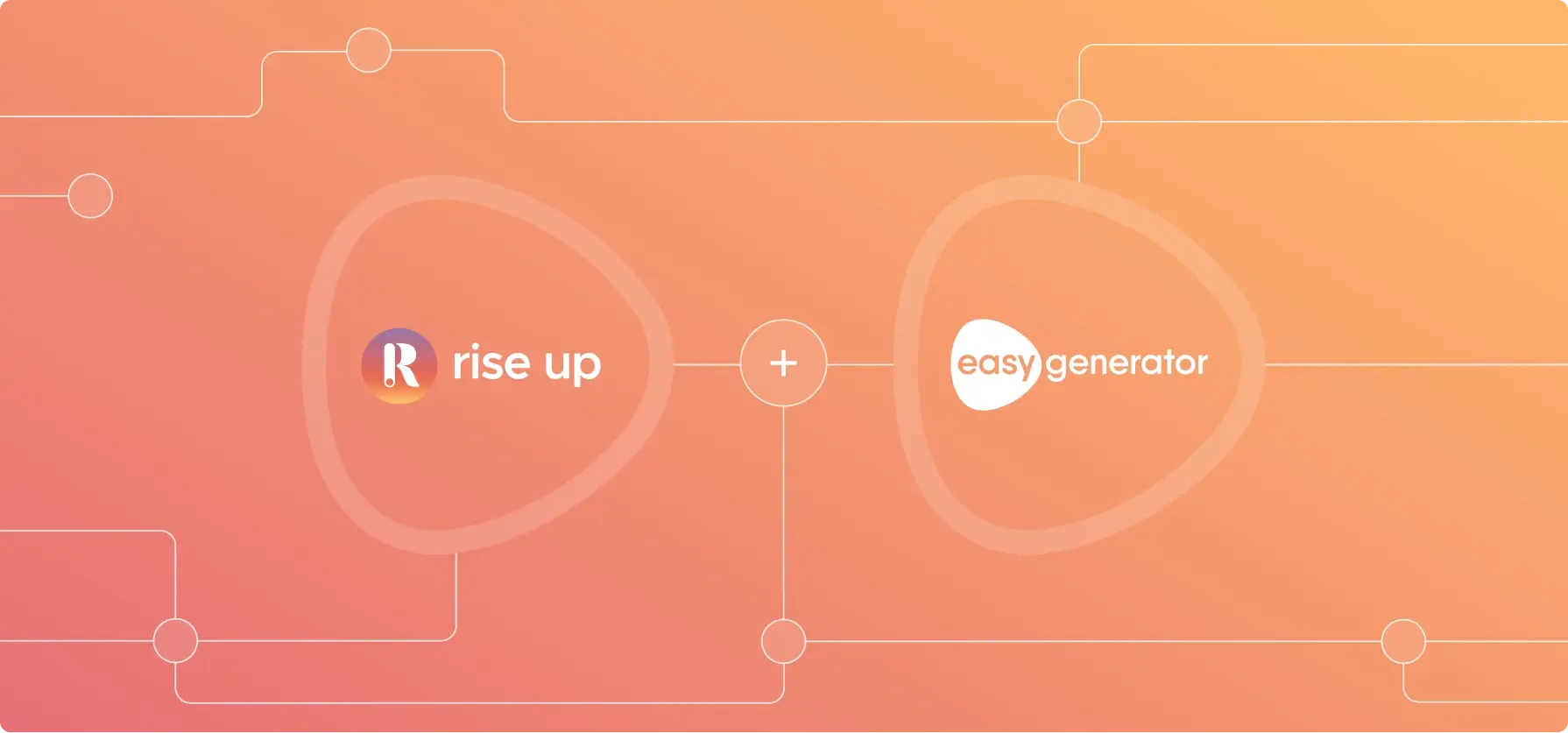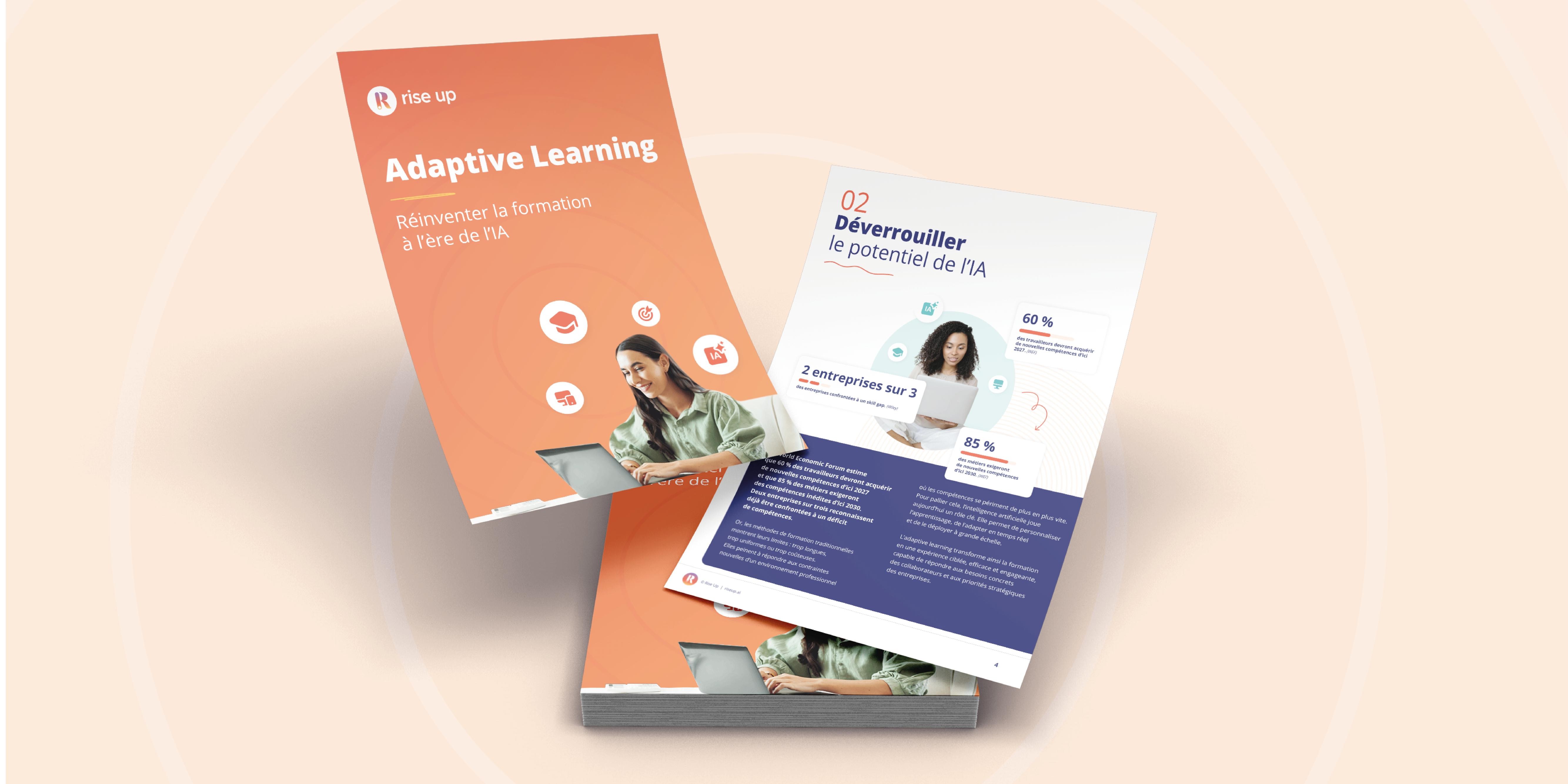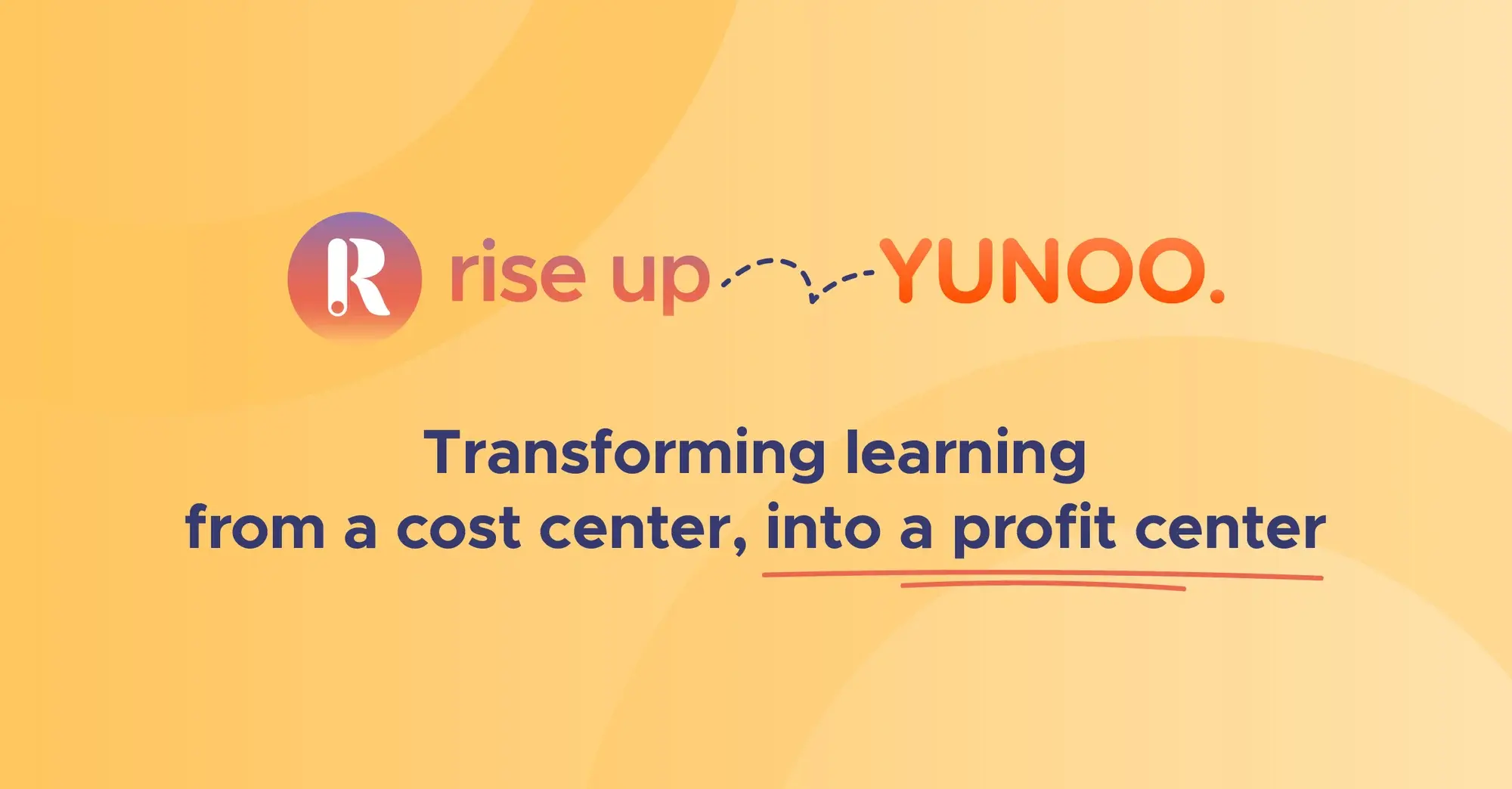Blended learning today: how it has evolved to become the new normal
6 minutes of reading | 2020-11-03
The Learning Management System, or LMS, has been constantly evolving over the last ten years or so, in order to adapt to the new changes in professional training.
Arnaud Blachon, CEO of Rise Up, speaks in this interview and discusses how the LMS is constantly adapting to the training issues of companies and training organisations..
Blended Learning has changed a lot in 10 years. What are the most remarkable evolutions in terms of training modalities/media and the layout of these modalities?
Blended Learning is evolving to adapt to the demands of vocational training, which has been marked by numerous reforms in recent years. In my opinion, the most remarkable developments are mobile learning, virtual reality, data analysis and voice simulation.

In your opinion, what factors, internal or external to the company, have presided over these developments?
The arrival of MOOCs in 2014 has revitalized the market with a real interest from users for the format, flexibility and freedom they represented at the time.
Although completion rates have never been great, a closer look at what works and what doesn't work to improve digital learning has begun.
The rapid evolution of the professions makes it necessary to train employees because it is a question of survival for the company. Then, the regulatory environment is a factor that drives change, of course. The legal framework is a constraint that generates ideas and innovations.
This constraint can be very fruitful, since it encourages us to imagine new schemes. And when the law authorises new teaching methods, it opens up possibilities.
When this same law changes the rules of financing and training is no longer a tax but a budget spent, the question of ROI becomes obvious. A myriad of tools and methods for data collection emerge. LMSs must adapt to this new logic and offer more efficient evaluation tools.
All these changes mean that training is taken more seriously within the company: it is an expense that needs to be made profitable. This makes it possible to shed light on its benefits, on its transformative power within a company..
More than Blended Learning? What role do training platforms play in these developments? How have they evolved on their side?
Expectations in terms of training are now concrete and quantified. The technological innovations that have led to the rapid evolution of professions and the development of digital learning also make it possible today to answer the question of the evaluation of online training.
Since 2014, many things have been tested and evaluated. Feedback from experience now makes it possible to have a real perspective on the digital learning offer. For example, we know that serious games are not just for anyone, for anyone, for fun. Now, we are able to link a pedagogical objective, a context, constraints and an audience to an adapted technology and pedagogical engineering.
It was and still is necessary to test things before being able to seize it in an intelligent way. Today, the digital learning offer has reached a certain maturity and we are able to create an optimized training system by getting the best at the right time and in the right place.
The advent of blended learning is the best example of this, with LMS platforms that orchestrate multiple modalities and support complex learning structures.

How do these platforms manage to reconcile the traditional expectations of the training department in terms of LMSs, and those that LXPs promise learners, i.e. a more fluid UX that is closer to their Web and mobile uses ?
The platforms must be able to handle the complexity of the educational systems, to orchestrate the courses, to facilitate their deployment and administration, as well as their "consumption", so to speak, by the learners.
That said, few platforms are capable of doing this today. Indeed, developing the same tool for the administrator and the learner means taking into account two very different logics: one is managerial and the other is almost sensorial.
At Rise Up, we've always carried out the two reflections together. That's why we created the first Blended Learning platform because we integrated face-to-face management right from the conceptualization phase of our solution.
It was obvious that we were going to greatly simplify the work of training administrators and managers by also managing face-to-face sessions and that we first had to accompany learners towards digital learning by enhancing the course with innovative technologies to create a virtual classroom.
Furthermore, franchised companies with multiple partners or subsidiaries that deploy multimodal training projects must be able to rely on an LMS that manages their extended structuring.
On the other hand, the learner must not perceive anything of this complexity and his navigation, his experience on his LXP must be as intuitive, fluid and pleasant as possible. Many platforms favoured one or the other approach at the beginning and now try to balance but it is more difficult.
LXP is a new term - on the French market - and its appearance is indicative of a real shift within digital training: we are finally putting the learner at the center of the training design process.

There is no doubt that Blended Learning will continue to evolve in the coming years. In particular, will AI be a "game changer"?
AI will be a game-changer in the next few years, but today its technology is not yet ready. There is still a development and experimentation phase to go through, as we have seen in recent years with new L&D technologies.
AI will allow us to be as close as possible to the learner, to understand him/her better and to provide him/her with tailor-made support. It is revolutionary.
What are your recommendations to the training departments faced with these new challenges?
We have to make the right technological choices, which is difficult today in view of all the possibilities available. We must not follow fads and throw ourselves on everything. We really need to ask ourselves and think about the training methods that will adapt to the constraints of the learners and the organization and meet the pedagogical objectives defined upstream.
I would add that we should not train everyone for everything. You have to focus on the training paths that have the greatest impact on people's jobs because that's what will generate learner commitment.
Then, in terms of methodology, I really advise you to go little by little to overcome apprehensions on the one hand, and to adjust your pedagogy on the other hand. For example, you start by digitizing a pre-requisite session or a hot assessment and see what happens. You have to test, analyse, learn from your learners. There is no miracle recipe.
What's the latest on Rise Up?
We've just set up the Data Lab.
The Data Lab allows us to generate automated dashboards analyzing data related to the training deployed on our platform. In addition, we can cross-reference this data with internal company figures (sales, production, etc.) so that we can measure the ROI of the training devices and adjust them better.
In addition, we are working on a project that will go beyond blended learning and get out of the LMS/LXP straitjacket. This project will be an AI product and will enable us to support the learner in his business applications.
This project reflects our vision at Rise Up: to make e-learning and skills development a natural and integral part of the work situation.
We imagine that the action of "learning" will no longer be a one-off step or a prerequisite disconnected from the work situation but rather an unconscious reflex on the workstation with return trips guided by the milestones specific to the skills development of each individual.





